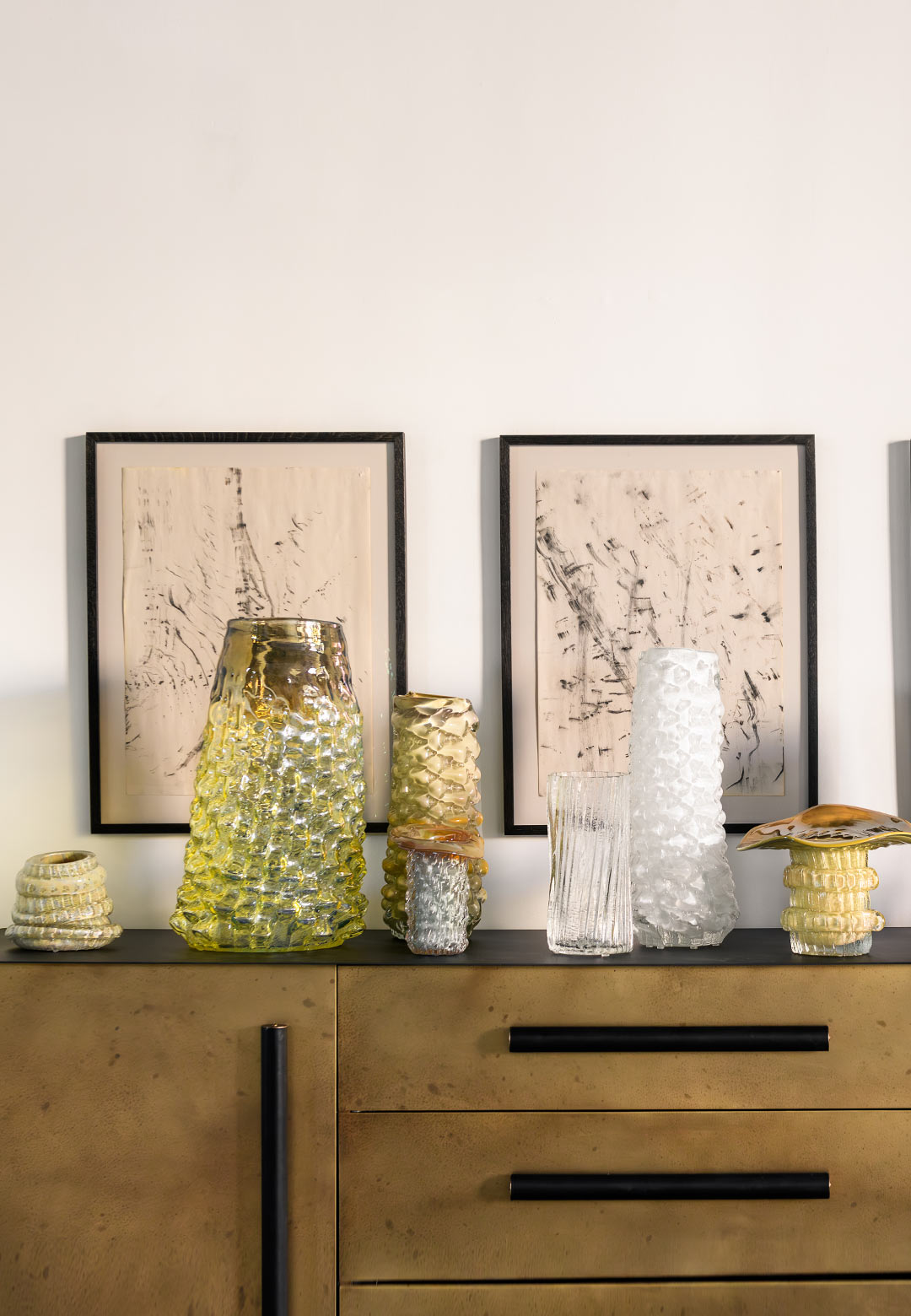“I could play with wood or glass alone for the rest of my life,” says Rafi Ajl, an artist based in Berkeley, California, who is committed to exploring the endless possibilities of materiality. For Ajl, there is a world within every object around us and similarly, the process of creation is never terminal—it is limitless in terms of opportunities. This is the guiding principle of Two Bodies, Ajl’s solo exhibition at the collectible design gallery The Future Perfect in San Francisco. The title of the design exhibition derives from the artist’s two distinct bodies of work in the show: Erratics, a series of wood, brass and aluminium furniture designs, and Saguaro Works, Ajl’s glassworks. “Rafi’s deep-seated appreciation for craft and ability to reinvent classic processes to create singular pieces make him an incredible addition to The Future Perfect’s ever-expanding roster of artists and designers and to the gallery’s San Francisco location,” says Laura Young, gallery director at The Future Perfect.
Ajl, captivated by form and process, is fuelled by curiosity and the pressures of the creative journey. He works with an array of practices and mediums including wood, metal, glass, bronze, aluminium, stone and ceramics. The artist has produced heirloom-worthy furniture and singular home objects under his design studio, The Long Confidence. In recent years, Ajl shifted his focus towards sculpting large-scale pieces that explore raw materiality. “I like to push the limits of the material, find breaking points, the unexpected within—glass, bronze or ceramics—whatever material is at hand,” he explains. Ajl’s approach also stems from post-structuralist critical theory, emphasising that the process is boundless and full of play.
A guiding quote for Ajl as he developed Two Bodies was by Austrian poet and novelist Rainer Maria Rilke, in Letters to a Young Poet, “If you will stay close to nature, to its simplicity, to the small things hardly noticeable, those things can unexpectedly become great and immeasurable.” Nature is the muse for Erratics. By definition, erratics are chunks of rock encased in glaciers. These rocks fall away as glaciers move, ending up in spaces outside their natural contexts. Ajl’s series of Erratics is a cumulation of pieces of scrap material as study and play. The ‘erratics’ in this case become jewels that either disrupt or melt into forms. From brass rings enclosed in wooden furniture, brass ‘teeth’ set in a chair design, reimagined hammered spindles or wood block patchwork on the back of a chair, Erratics unearths new opportunities in remnants.
Saguaro Works, a troupe of over 40 vessels produced in the past year, is displayed in the exhibition space along with four table designs with glass legs and ‘super-matte’ brush aluminium tops. Ajl’s glassworks introduce an entirely new mould-making process and technique—an extension of his aspiration to reinvent the understanding of glass’ capabilities and its associated cliched aesthetics. He refuses to conform his work to the fragile, small, delicate and pretty image of glass creations.
The wood moulds that Ajl has been working on since 2021 depart from tradition, and are carved and reused. Defying uniformity, they invite exploration—paving the way for refreshing semantics that adorn glass with unlikely characteristics such as sensuality, intensity and grace at scale. Speaking about his glass pieces, Ajl notes, “My glass pieces are thick and chewy and strong. Their quality is surreal as if they are AI-generated, but when you look closely, they exude a natural texture and vitality.” The Saguaro vessels and table legs are diverse, varying in scale, complexity, colour and texture. Some colours express tonal duality and contrast, some are iridescent and others feature colours determined by temperature, pressure and timing.
Additionally, Ajl also showcases a series of prints created by taking singed and burnt wood moulds covered in graphite and moving them on paper. This culminated in abstract traces of the moulds on paper. “I want to suggest that the moulds themselves are also compelling objects,” says Ajl. “They are integral to the process but also seen as works unto themselves,” he adds.
Ajl describes his work as ‘brutally handmade,’ pursuing and redefining thresholds, dabbling with materials and processes, and a result of constant tinkering. The pieces all chase unique forms, scales, and material applications to achieve a visual language where error and perfection align. In Two Bodies, Ajl annunciates the tenets of his practice: being receptive to possibilities and a layered perspective of beauty and process.
‘Two Bodies’ is on view from June 7 - July 19, 2024, at The Future Perfect’s San Francisco gallery.






 Sign in with email
Sign in with email










What do you think?